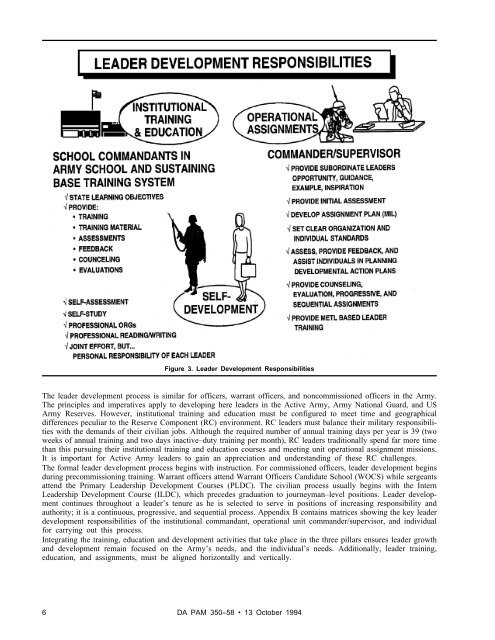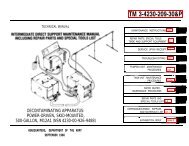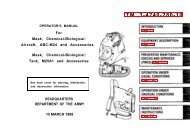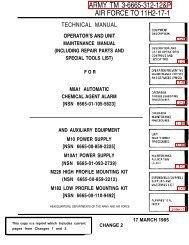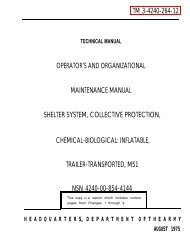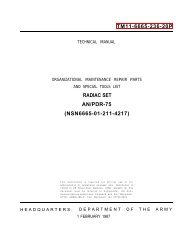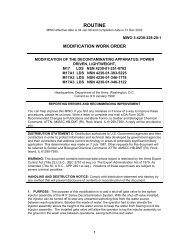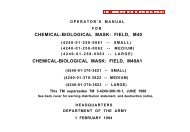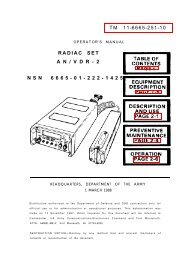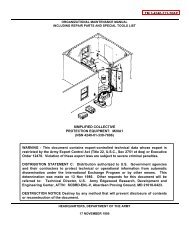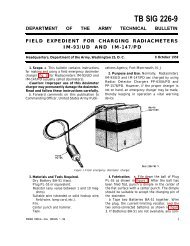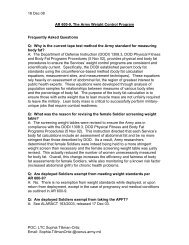LEADER DEVELOPMENT FOR AMERICA'S ARMY
LEADER DEVELOPMENT FOR AMERICA'S ARMY
LEADER DEVELOPMENT FOR AMERICA'S ARMY
Create successful ePaper yourself
Turn your PDF publications into a flip-book with our unique Google optimized e-Paper software.
Figure 3. Leader Development Responsibilities<br />
The leader development process is similar for officers, warrant officers, and noncommissioned officers in the Army.<br />
The principles and imperatives apply to developing here leaders in the Active Army, Army National Guard, and US<br />
Army Reserves. However, institutional training and education must be configured to meet time and geographical<br />
differences peculiar to the Reserve Component (RC) environment. RC leaders must balance their military responsibilities<br />
with the demands of their civilian jobs. Although the required number of annual training days per year is 39 (two<br />
weeks of annual training and two days inactive–duty training per month), RC leaders traditionally spend far more time<br />
than this pursuing their institutional training and education courses and meeting unit operational assignment missions.<br />
It is important for Active Army leaders to gain an appreciation and understanding of these RC challenges.<br />
The formal leader development process begins with instruction. For commissioned officers, leader development begins<br />
during precommissioning training. Warrant officers attend Warrant Officers Candidate School (WOCS) while sergeants<br />
attend the Primary Leadership Development Courses (PLDC). The civilian process usually begins with the Intern<br />
Leadership Development Course (ILDC), which precedes graduation to journeyman–level positions. Leader development<br />
continues throughout a leader’s tenure as he is selected to serve in positions of increasing responsibility and<br />
authority; it is a continuous, progressive, and sequential process. Appendix B contains matrices showing the key leader<br />
development responsibilities of the institutional commandant, operational unit commander/supervisor, and individual<br />
for carrying out this process.<br />
Integrating the training, education and development activities that take place in the three pillars ensures leader growth<br />
and development remain focused on the Army’s needs, and the individual’s needs. Additionally, leader training,<br />
education, and assignments, must be aligned horizontally and vertically.<br />
6 DA PAM 350–58 • 13 October 1994


